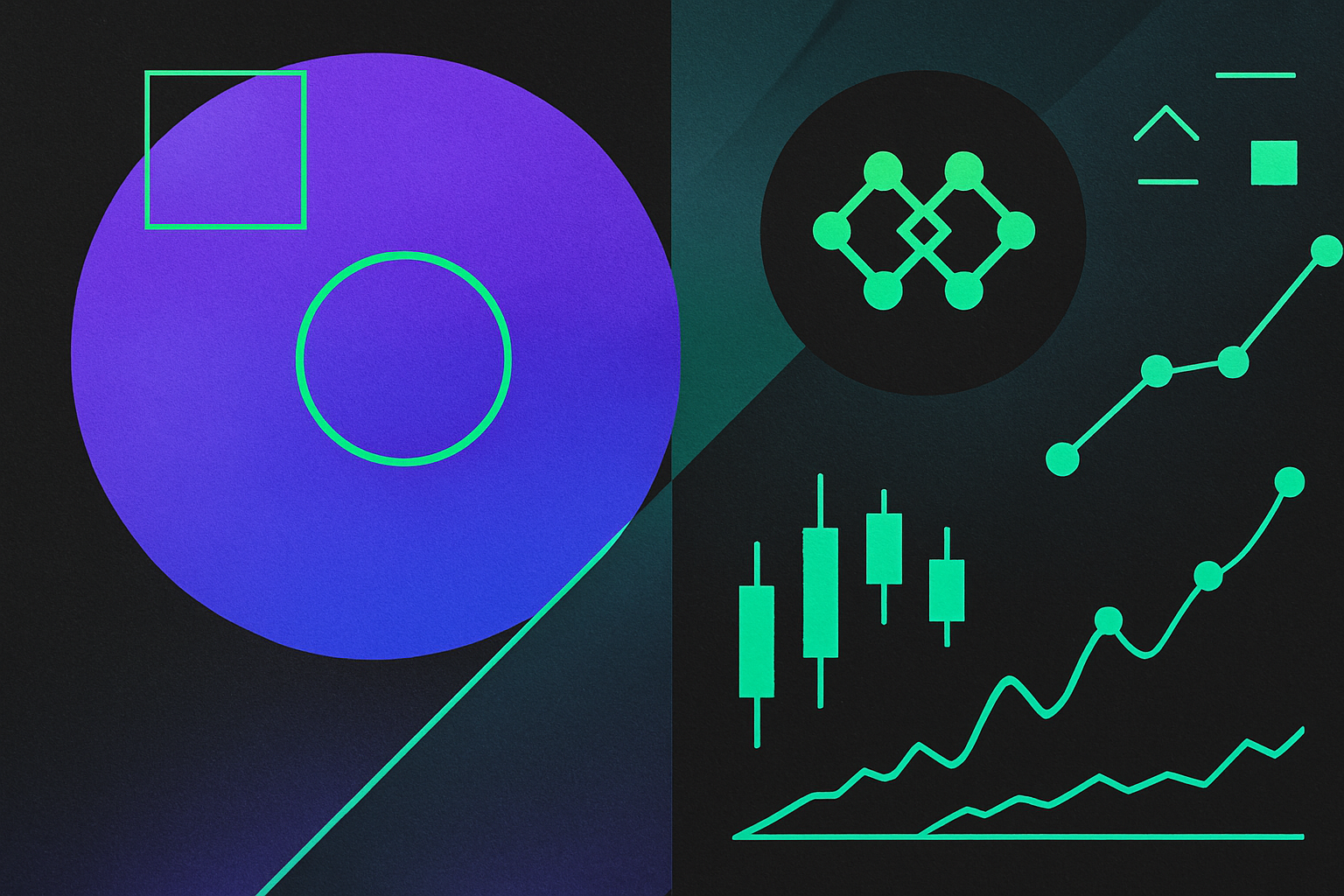How Blob Data Pricing Works on Celestia: Analyzing Fee Spikes and Market Volatility

Celestia’s modular architecture has upended the economics of blockchain data fees, offering developers a more predictable and scalable foundation for posting data blobs. But with blob sizes and transaction volumes surging to all-time highs, understanding how Celestia blob pricing works – and why it remains stable even amid market volatility – is mission-critical for traders, rollup operators, and anyone analyzing data availability costs.
Celestia Data Blobs: Pricing Mechanics and Fee Structure
Unlike legacy blockchains, Celestia separates consensus from data availability, allowing rollups and applications to post data blobs directly to its base layer. The cost of submitting a blob is determined by two components:
- Base Transaction Fee: A minimal fixed cost per transaction, currently around $0.00002 for typical rollup posts.
- Variable Data Fee: Charged per megabyte of blob data, currently averaging $7.31 per MB. This is a direct function of blob size – the larger the blob, the higher the fee.
This dual-fee structure enables cost predictability for developers, especially when compared to Ethereum’s volatile EIP-4844 blob pricing (averaging $20.56 per MB for the same period). The result: Celestia is approximately 64% cheaper on a per-megabyte basis.
Fee Spikes and Market Volatility: What Recent Data Shows
Despite transaction volume increasing 60% (to 71,000 daily transactions) and average blob sizes spiking nearly tenfold to 11.4 GB in recent weeks, Celestia’s fee market has remained remarkably stable. This stands in sharp contrast to Ethereum L2s, where blob fee spikes of 200-300% are not uncommon during periods of congestion.
The secret to this resilience lies in Celestia’s prioritized mempool: validators select transactions based on gas price, but without punitive surges in base fees when demand rises. This means that even as more rollups like Eclipse and on-chain exchanges such as Hyperliquid and Hibachi flood the network with data, fees do not spiral out of control.
Analyzing Blob Fee Volatility: The Target Demand Paradox
One of the key insights from recent market analytics is the so-called Target Demand Paradox: effective demand for blobs tends to stabilize between 3.13 and 3.20 blobs per block. When usage drops below this threshold, demand becomes highly elastic, leading to potential underutilization; above it, competition increases but does not result in runaway fees thanks to Celestia’s market design.
This equilibrium is critical for both traders looking to optimize blob trading strategies and developers seeking predictable posting costs. It also helps mitigate pricing attacks that could otherwise destabilize L1/L2 rollup economics.
Celestia (TIA) Price Prediction 2026-2031
Forecasts based on current market trends, adoption rates, and fee stability in Celestia’s data availability sector.
| Year | Minimum Price (Bearish) | Average Price (Base) | Maximum Price (Bullish) | Yearly % Change (Avg) | Scenario Insights |
|---|---|---|---|---|---|
| 2026 | $0.90 | $1.20 | $1.60 | +14% | Continued adoption, stable fees; possible volatility if demand surges unexpectedly. |
| 2027 | $1.05 | $1.38 | $2.00 | +15% | Layer 2 growth and new dApps drive usage; competition from alternative DA solutions may cap upside. |
| 2028 | $1.20 | $1.60 | $2.50 | +16% | Regulatory clarity and mainstream rollup adoption boost confidence; tech upgrades improve scalability. |
| 2029 | $1.10 | $1.85 | $3.10 | +16% | Market cycle peak; increased institutional interest. Watch for potential correction after strong rally. |
| 2030 | $1.30 | $2.10 | $3.80 | +14% | Celestia solidifies as leading DA layer; potential for EIP-style upgrades to improve efficiency further. |
| 2031 | $1.15 | $2.35 | $4.50 | +12% | Market matures, growth stabilizes; new entrants and tech shifts could impact competitive positioning. |
Price Prediction Summary
Celestia (TIA) is forecast to see steady price appreciation through 2031, driven by its cost leadership and growing adoption as a modular data availability solution. While volatility is expected, especially during broader crypto market cycles, Celestia’s stable fee structure and expanding ecosystem position it well for long-term growth. The price range reflects both bullish scenarios (mass adoption, tech breakthroughs) and bearish risks (competition, regulatory hurdles, or demand shocks).
Key Factors Affecting Celestia Price
- Sustained growth in rollup and Layer 2 adoption, driving blob demand.
- Celestia’s continued cost advantage over Ethereum and other DA solutions.
- Potential for protocol upgrades to further reduce fees and improve scalability.
- Macro crypto market cycles influencing sentiment and investment flows.
- Emergence of competing data availability layers or disruptive technologies.
- Regulatory developments impacting modular blockchain adoption.
- Ecosystem expansion (new dApps, partnerships, integrations).
Disclaimer: Cryptocurrency price predictions are speculative and based on current market analysis.
Actual prices may vary significantly due to market volatility, regulatory changes, and other factors.
Always do your own research before making investment decisions.
Comparing Celestia to Ethereum: Cost Stability in Action
With Celestia charging around $0.08 per MB at the protocol level (and an all-in average of $7.31 per MB in real-world usage), it is roughly 1,000x cheaper than Ethereum’s EIP-4844 in many cases. This efficiency is driving rapid adoption among high-throughput rollups and dApps that require scalable data availability.
The bottom line: as transaction counts and blob sizes continue to grow, Celestia’s modular design and efficient pricing mechanism are keeping blob fee volatility in check – making it a compelling choice for anyone navigating the evolving landscape of on-chain data markets.
For those actively trading or building on Celestia, the current market context underscores a major advantage: cost predictability even in periods of surging demand. While transaction counts and average blob sizes have reached unprecedented levels, the network’s fee market has not exhibited the extreme volatility seen on Ethereum. This is a direct result of Celestia’s architecture, where separation of consensus and data availability allows for independent scaling and smoother fee dynamics.

From a practical perspective, this means developers can confidently estimate their DA costs for new rollups or dApps, and traders can model blob fee exposure with far less uncertainty. For example, at the current average price of $7.31 per MB and a base fee of $0.00002 per rollup transaction, even a 10x increase in transaction throughput has not led to outsized fee spikes. This is a stark contrast to Ethereum, where similar demand shocks have historically triggered 200-300% fee surges, disrupting both user experience and on-chain economics.
Navigating Blob Fee Spikes: Strategies for Traders and Developers
Understanding the mechanics of blob fee volatility is essential for anyone optimizing capital efficiency or risk management in Celestia’s data markets. Here are several tactical approaches:
- Monitor Real-Time Fee Trends: Use dashboards and analytics tools to track blob fee movements and transaction volumes. React to emerging congestion before fees adjust upward.
- Batch Transactions: Rollup operators can minimize costs by batching multiple transactions into larger blobs, maximizing the data-to-fee ratio.
- Time Submissions: Schedule non-urgent blob postings during periods of lower network activity to further reduce exposure to transient fee spikes.
For a deeper dive into actionable analytics and trading signals, explore our guide on analyzing Celestia data blob pricing trends for informed trading decisions.
The Future of Blob Market Analytics: What to Watch
As Celestia’s ecosystem matures, expect further innovation in both protocol-level fee mechanisms and third-party analytics. With new rollups and dApps driving demand, the ability to anticipate and respond to blob fee changes will become a core competency for both developers and traders.
Key metrics to watch include:
- Average Blob Size: Sustained increases may signal new high-throughput applications coming online.
- Transaction Throughput: Spikes often precede fee adjustments, especially if they outpace protocol upgrades.
- Fee Elasticity: Track how quickly fees respond to demand shocks, and whether the Target Demand Paradox holds at higher scales.
Celestia’s ability to maintain fee stability at the current price point – with TIA trading at $1.05, a 24h high of $1.07, and a low of $1.02 – will be closely watched as the network continues to scale. For up-to-date market analytics, pricing trends, and advanced strategies, stay connected with Blobspace Markets.
Celestia (TIA) Price Prediction 2026-2031
Forecasting TIA Token Price Ranges Based on Blob Data Adoption, Fee Market Evolution, and Ecosystem Growth
| Year | Minimum Price (Bearish) | Average Price (Base Case) | Maximum Price (Bullish) | % Change (Avg YoY) | Market Scenario Insight |
|---|---|---|---|---|---|
| 2026 | $0.90 | $1.20 | $1.80 | +14% | Consolidation after 2025 surge; stable DA fees, but risk of oversupply amid market cooling |
| 2027 | $1.05 | $1.45 | $2.30 | +21% | Renewed interest from Layer 2s and new rollup launches; increased transaction volume |
| 2028 | $1.20 | $1.75 | $2.85 | +21% | Major protocol upgrades boost scalability; Celestia cements lead in modular DA market |
| 2029 | $1.45 | $2.10 | $3.50 | +20% | Mainstream enterprise use cases emerge; competition with EigenDA and Avail intensifies |
| 2030 | $1.70 | $2.45 | $4.20 | +17% | Global regulatory clarity; cross-chain data markets flourish, but volatility rises |
| 2031 | $2.00 | $2.85 | $5.00 | +16% | Celestia achieves significant market share; DA costs drop, but TIA utility demand spikes |
Price Prediction Summary
Celestia (TIA) is poised for progressive growth, driven by its efficient data availability fee structure and rising adoption by Layer 2 platforms. While volatility and competition may cause price swings, Celestia’s technology and cost advantage position it for steady year-over-year appreciation. Bullish scenarios depend on continued network adoption and successful scaling, while bearish cases reflect potential market corrections or competitive displacement.
Key Factors Affecting Celestia Price
- Sustained growth in demand for blockchain data availability and rollup adoption
- Fee market stability and continued cost advantage over competitors like Ethereum and Avail
- Successful implementation of protocol upgrades and scaling solutions
- Increased enterprise and institutional adoption of Celestia’s modular architecture
- Potential regulatory changes affecting token utility, staking, or cross-chain integrations
- Emergence of new competitors or disruptive technologies in the data availability space
- General crypto market cycles and macroeconomic factors impacting risk appetite
Disclaimer: Cryptocurrency price predictions are speculative and based on current market analysis.
Actual prices may vary significantly due to market volatility, regulatory changes, and other factors.
Always do your own research before making investment decisions.





